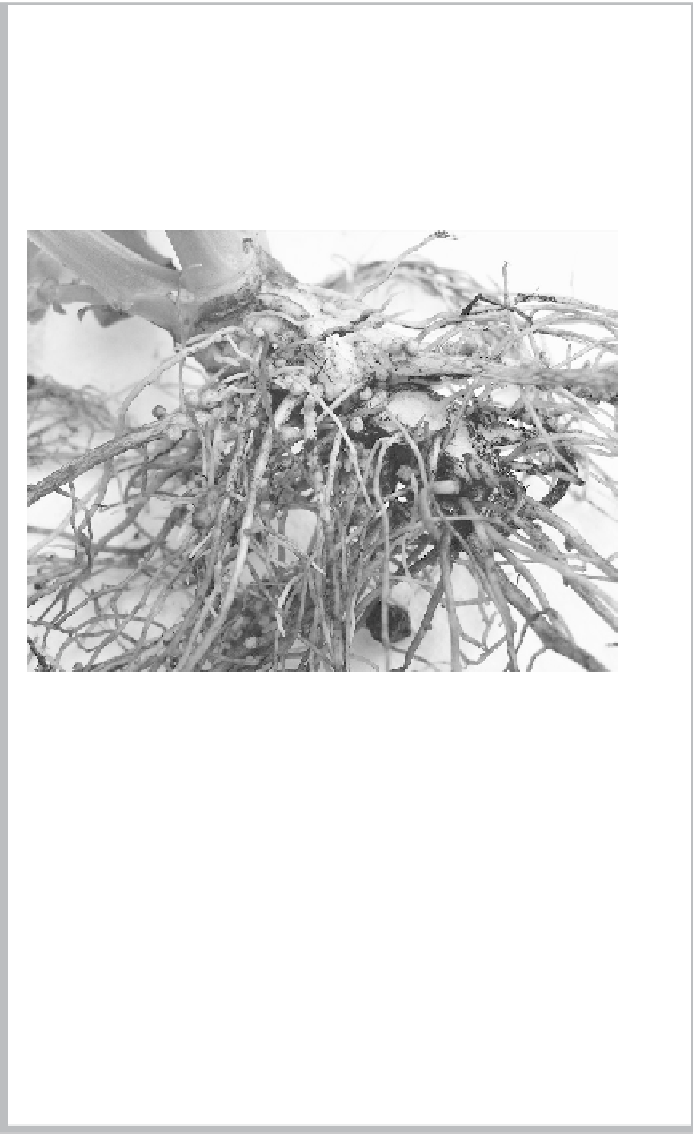Agriculture Reference
In-Depth Information
Box 5.2 Factors Influencing Nitrogen Fixation by Legumes
Nitrogen (N) fixation begins when a legume root is invaded by
Rhizobium
bacteria
living in the soil. This invasion stimulates cells in the root cortex to divide and
enlarge to form a nodule (figure B5.2.1). Within a nodule, the bacteria synthesize
an enzyme called nitrogenase that traps molecules of N
2
gas and reduces them to
ammonia (NH
3
), which is incorporated into amino acids.
Figure B5.2.1
Nodules on the roots of a faba bean plant. Effective nodulation usually
occurs on primary roots near the base of the stem.
The reduction of NH
3
requires a large amount of energy, generated from the
metabolism of carbohydrates supplied to the bacteria by the host plant. In return,
the host receives amino acids that combine to form proteins. This association is
called symbiotic because it benefits both the host and the
Rhizobium
bacteria.
Effective N
2
fixation is indicated by a pink color inside a nodule.
Several factors determine the success of the root infection, nodule initiation,
and N
2
fixation. For example,
• LowpHandlowcalcium(Ca)supplyinhibitrootinfectionandnodule
initiation
• Competitionoccursbetweenefectiveandinefective
Rhizobium
strains at
the time of root infection. An ineffective strain produces many nodules that
do not fix N
2
, yet their presence inhibits nodulation by an effective strain
(continued)

